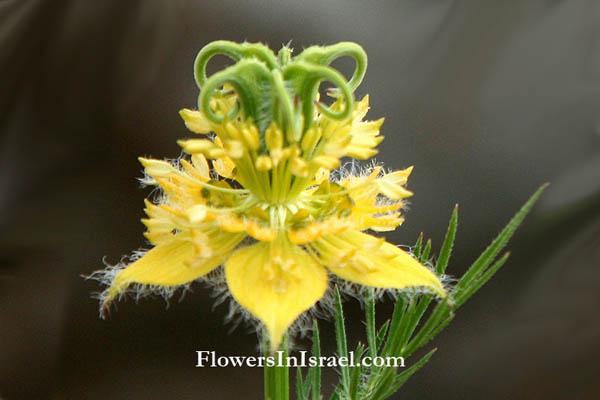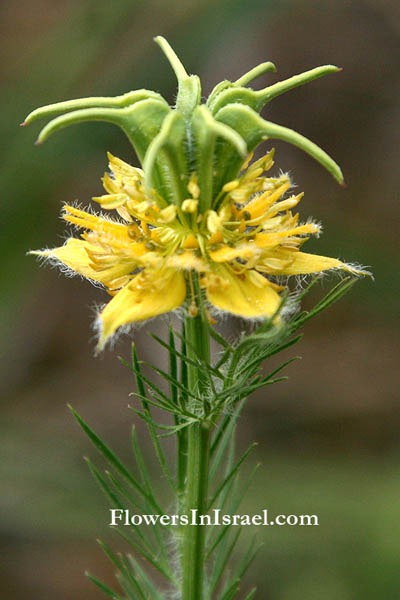Hebrew: קצח ריסני, Arabic: كمون اسود
| Scientific name: | Nigella ciliaris DC. | |
| Common name: | Ciliate Love-In-A-Mist | |
| Hebrew name: | קצח ריסני | |
| Arabic name: | كمون اسود "kamun aswad" | |
| Family: | Ranunculaceae, נוריתיים |

|
| Life form: | Therophyte, annual | |
| Stems: | 25-35 cm high | |
| Leaves: | Alternate, dissected | |
| Inflorescence: | Inflorescences terminal or axillary, flowers solitary | |
| Flowers: | Yellow hairy sepals 5, petaloid, caducous. hairy petals 8, narrowing at the base into a horn-like nectariferous claw, hilabiate, the lower lip being bifid; stamens many, connective broad; carpels 3-10 sessile, whorled, connate at the base, each finishing in a linear style | |
| Fruits / pods: | Follicles partly connate in a capsule | |
| Flowering Period: | March, April, May, June | |
| Habitat: | Batha, Phrygana | |
| Distribution: | Mediterranean Woodlands and Shrublands, Semi-steppe shrublands | |
| Chorotype: | Mediterranean | |
| Summer shedding: | Ephemeral |

Derivation of the botanical name: Nigella, diminutive of Latin niger or nigrum, black, referring to the seed color. ciliaris, cilium, eyelash and eyelid together; aris, of or pertaining to; meaning fringed with hair. The Hebrew name: קצח, ketzach; the Arabic and Aramaic name is ketzah.
|